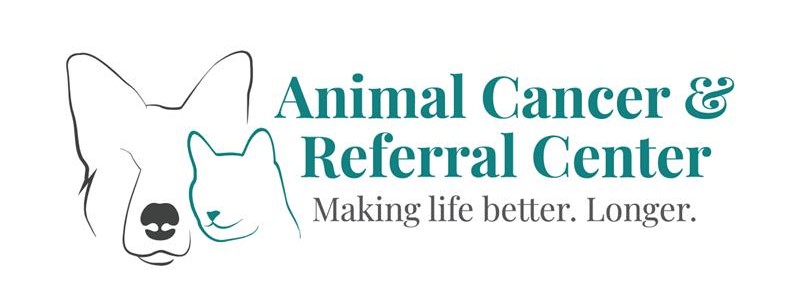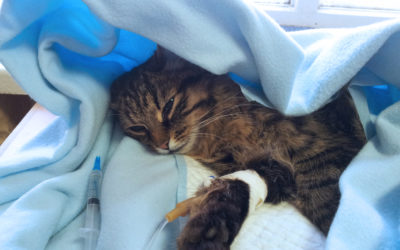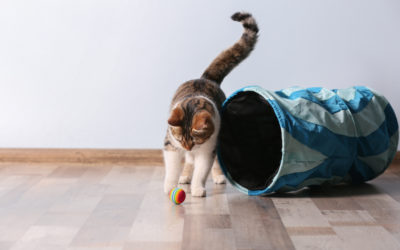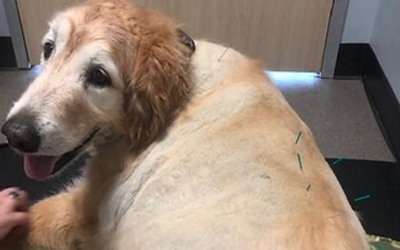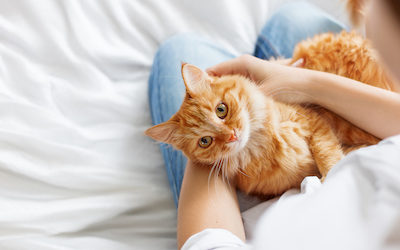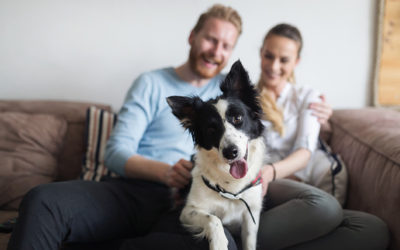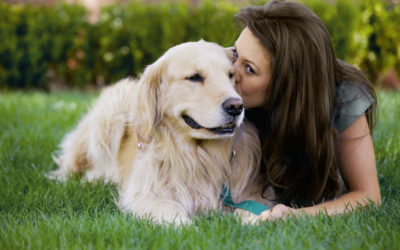Hidden Dangers in Your Home: 6 Top Toxins for Pets
Pets are inquisitive creatures, exploring the world with their noses, paws, and mouths, but that curiosity can literally kill the cat—or dog. While pets will obviously sniff out and gobble down something that smells tasty, such as raisin bread or chocolate, identifying items that we do not think would appeal to pets is more challenging. Bitter medications, household cleaners, and pesticides should not entice your pet, yet the ASPCA fields thousands of phone calls a year regarding potential poisoning from inedible items. When in doubt, keep any possible toxin well out of your furry pal’s reach to ensure her safety, and keep a close eye out for the following most common poisons.
#1: Human medications
Human medications encompass a wide range of drugs, including over-the-counter products, herbal supplements, vitamins, and prescription medications. Loving pet owners hate seeing their pets in pain or suffering from gastrointestinal distress, and may turn to items in their own medicine cabinet before they schedule a veterinary visit. But, many human medications are toxic for pets, especially if they are added to a veterinary-prescribed pain, anti-nausea, or appetite-stimulant medication. If your pet is already taking medication we’ve prescribed, doubling up on human medications will likely cause issues. For example, if we prescribed medication for your dog’s osteosarcoma pain, and you add aspirin at home, your pooch may suffer from gastric ulcers, vomiting, diarrhea, abdominal pain, seizures, or kidney or liver disease.
Human-medication ingestion by pets can also be accidental, such as unattended pill bottles, or medication dropped on the floor. While many pets suffer from inappetence and nausea during chemotherapy treatment, appetite stimulants can pique their hunger enough that they will scarf up anything, including dropped pills. For your pet’s safety, keep her out of the room when you take your medications, and place all pill bottles out of reach.
#2: Food
While chocolate has its own category on the ASPCA’s list of most common toxins, we’ve lumped it in with all other foods. It’s still a frequent flyer on the common-toxin list, despite most pet owners understanding the dangers, because owners often are unsure of the dosage required to cause toxicity, and want to ensure their dog’s safety. Other foods that have the potential to cause vomiting, diarrhea, neurologic issues, kidney disease, or liver failure include:
- Garlic
- Onions
- Yeast
- Alcohol
- Macadamia nuts
- Grapes
- Raisins
- Xylitol
While these items can be toxic, other foods, such as steak fat, bones, and high-fat items, can also be hazardous to your pet’s health, and can cause pancreatitis, a potentially life-threatening condition. When tempting your pet to eat during chemotherapy treatments or hospice care, ensure the food you’re offering will not make her nauseous, and more sick.
#3: Veterinary products
Many pet medications are designed to be highly palatable, since getting medicine safely into a pet is often a challenge. Occasionally, a pet will sneak into her stash of chewable heartworm prevention, or sniff out other flavored medications. Other veterinary medication overdoses are through human error. For example, lack of communication between pet owners can result in a double dose of medication, if both owners medicate the pet unknowingly. If your pet mistakenly receives too much medication, particularly oral chemotherapy agents or pain medications, contact us immediately.
#4: Household items
Household items are often the least tasty group of toxins, but pets may fall victim to these poisons because of their close proximity. Paint, glue, and household cleaning products can pose a threat to your pet. Keep craft supplies out of your furry pal’s reach, and ensure cleaning products are pet-safe and stored appropriately.
#5: Rodenticides and insecticides
Rat poison, slug bait, and bug sprays are common hazards that can seriously harm your pet. Ensure she cannot reach rodenticides and insecticides in your home, as they are as life-threatening to your pet as to rodents and insects. Ask a professional exterminator for help with pet-friendly pest-control options.
#6: Plants and garden products
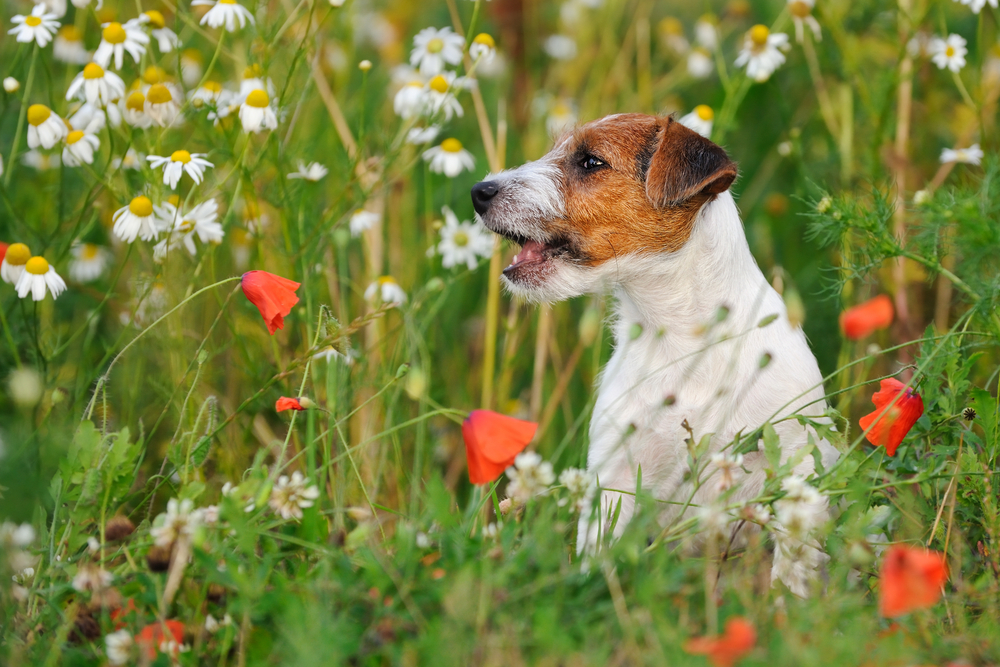
Many plants can be toxic to your pet if ingested. Some are so hazardous—lilies for cats, for example—that mere contact with the pollen can lead to kidney failure. Before bringing plants into your home, or planning a bright, bloom-filled garden for you and your pet to enjoy, check the ASPCA’s list of toxic plants so you know what to avoid. Also, when coaxing beautiful displays from your plants, be wary of the fertilizer and mulch products, which may entice your pet into ingesting a toxic substance.
Before adding a supplement to your pet’s treatment plan, contact us. Some supplements, herbs, and vitamins can interact with your beloved companion’s medications.
5 Ways to Stay Active After Your Pet’s Cancer Diagnosis
After your pet receives a cancer diagnosis, spoiling her with daily McDonald’s hamburgers and lazy afternoons snuggling on the couch may be tempting. But, while these are wonderful ways to bond with your best friend, continue to show your love through regular activity. Many pets desire nothing more than time spent with their “person,” and daily exercise will help keep your pet strong, promote healthy muscle mass, and create a special time in your busy day to focus solely on your pet. While battling cancer, your pet may not feel quite up to snuff, and she may not bounce around with her typical delight when presented with a toy or leash. However, she will still be overjoyed to take part in her favorite activities. Naturally, you may be worried about doing too much if your pet is weak or feels ill, so follow these tips to ensure your furry friend enjoys her adventures to the fullest.
#1: Follow your pet’s lead during activities
Let your pet set the pace on your jaunts throughout the neighborhood or during play. If she can do no more than a slow plod, don’t push her to complete the five-mile loop from her younger days. If your pet appears uncomfortable and cannot tolerate intense hiking expeditions, listen to her, and avoid steep hills and stick to flat ground.
When you are playing together at home, your dog may be unable to run as far during a game of fetch. Stick with gentle ball tosses, and limit play sessions to brief intervals, allowing her plenty of time to rest.
Your kitty may not be able to jump as well as she used to, so keep that in mind when playing with her with feather wands or fishing pole toys. Most cats enjoy stalking and pouncing games, so you can likely entice your feline friend into a game of chase by dragging a feather wand along the floor, rather than flicking it high in the air. As with dogs, keep play sessions brief, with ample recovery time.
#2: Monitor your pet closely when playing
While enjoying a game of fetch, a hike along a trail, a training session, an agility course, or a stalk-and-pounce activity, monitor your pet closely for signs of discomfort or tiring. Pets with bone cancers can become painful with too much activity on the affected limb, or chemotherapeutic medications can sap your pet’s energy or make her feel ill. Keep an eye out for the following signs that your pet is ready to call it quits:
- Excessive panting
- Limping
- Lagging behind
- Slowing down
- Lack of interest in surroundings or activity
- Whining, whimpering, or groaning
Many pets enjoy playing their favorite games with their owners, but cannot make a sound decision about when to quit. Be your furry pal’s advocate, and encourage her to rest and relax before she exceeds her limits.
#3: Spend time doing your pet’s favorite activities
When your beloved pet receives a cancer diagnosis, you may be tempted to cram as many fun, fulfilling activities into the time you have left together, trying to complete a bucket list. But, if your dog was never a fan of crowded dog parks or car rides, avoid those adventures and choose activities your pet likes. She may enjoy a solitary hike in the woods more than a day at the dog park, or a walk around the neighborhood rather than a trip through the drive-thru for a snack that will make her nauseous. Most cats are homebodies and would prefer to stay home, rather than set out to experience new adventures, especially if they feel unwell. Instead, offer your kitty her most-loved foods, and participate in her favorite activities at home.
#4: Help your pet as needed
As your pet grows older and her cancer progresses, her body may be unable to function as well. Her limbs may become weak and unable to fully support her weight, especially on slick floors. She may not be able to jump to reach her favorite perch or catch her ball. Support your pet by adding stairs or ramps so she does not need to jump, lay down carpet runners for traction, and purchase mobility aids to help her walk. Slings, toe grips, and limb braces can support your pet, and ensure she remains comfortable while she is active.
#5: Ask us to help keep your pet comfortable
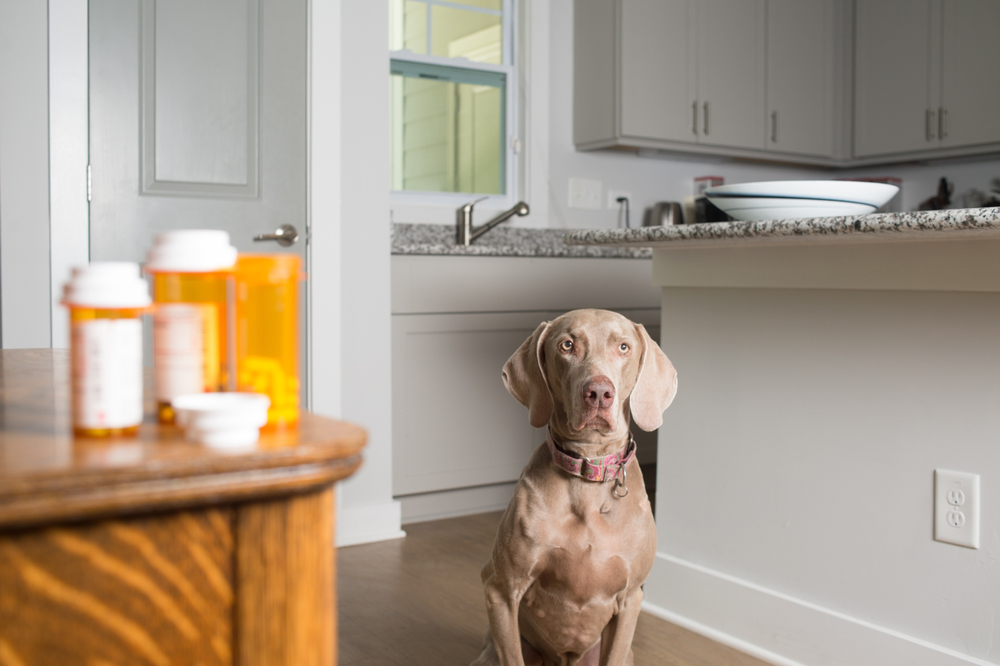
Despite all the changes you make at home to keep your pet comfortable while she goes about her favorite activities, you may feel that you could be doing more. Fortunately for your furry friend, we can team up to provide additional pain-relief options to ensure she remains happy during her daily routine. Non-steroidal anti-inflammatories, opioids, nerve-pain medication, supplements, holistic treatments, and prescription diets can be added to your pet’s management plan to help keep her comfortable so she can fully enjoy being active with you.
If you notice your pet slowing down or not enjoying her favorite activities anymore, contact us.
10 New Year’s Resolutions for Your Pet’s Good Health
As December comes to a close, you may be thinking about your New Year’s Resolutions and how you can improve in 2020. But, did you know that many of your resolutions can also benefit your pets? Here are 10 New Year’s resolutions you can make that will help you and your pet be your best selves in 2020.
#1: Exercise more with your dog
Your dog deserves a walk every day, and some high-energy dogs could use more than one walk per day. Walks provide dogs not only physical, but also mental exercise. With so many sights, sounds, and smells in the great outdoors, daily walks can fire up your dog’s brain cells after a long day inside. Also, although you may be on a mission, remember to let your dog stop and smell the roses, which can do wonders for his mind, and yours.
#2: Feed pets a healthy, balanced, age-appropriate diet
Choose a high quality diet from a reputable pet-food company, and skip trendy boutique food. If you have questions about the best food for your pet, reach out to your family veterinarian or call us, and we will be happy to lead you through the confusing world of pet food. Never rely on advice from the cashier at the pet-food store.
Once you’ve chosen a diet, be careful not to overfeed your pet. About half the country’s pet population is overweight or obese, and the extra pounds can exacerbate joint pain, and lead to other major health problems, such as diabetes and cancer.
#3: Focus on your pet’s health
We all want to be healthy, and diet and exercise are a good start. Also, maintain your pet’s heartworm prevention and be diligent about year-round flea and tick control. Make and keep your pet’s wellness appointments, consider investing in pet health insurance, and ensure your pet’s vaccines are up-to-date. If your pet is 7 or older now, keep in mind that senior pets should see their veterinarian twice yearly. Regular veterinary visits help your veterinarian identify changes in your pet’s health earlier, which means treatment can begin early in a disease process, improving a pet’s chances of recovery.
#4: Screen for cancer and other diseases
Cancer is a leading cause of death among people and pets, and early diagnosis and intervention can mean the difference between life and death. Ask your veterinarian about these cancer screening techniques:
- Fine needle aspirate — If you notice a new lump or bump on your furry friend, this is an affordable and non-invasive way to learn what’s inside the lump.
- Rectal exam — This can help identify anal sac tumors before a pet shows other signs of illness.
- Blood work — Changes in your pet’s regular blood work can indicate illness early, before your pet shows other signs.
- Urinalysis — Transitional cell carcinoma (TCC) is the most common tumor of the urogenital system in dogs, and a urinalysis can reveal a gene mutation associated with this cancer, potentially leading to a diagnosis months before the dog shows clinical signs of the disease.
- X-rays — Radiographs, or X-rays, can reveal the presence of a tumor before other signs appear.
#5: Spay or neuter your pet
Decreasing the pet population is important, but spaying or neutering your pet helps reduce the risk of certain health problems, such as uterine infection, and mammary and testicular cancers. Talk with your primary care veterinarian about the best time to spay or neuter your pet to mitigate these risks.
#6: Quit smoking
Our pets breathe the same are we breathe, and they’re just as susceptible to health problems associated with secondhand smoke as our human family members. Not only are pets exposed to secondhand smoke when they breathe, but they also ingest it when they groom themselves. Researchers have found that dogs exposed to secondhand smoke are at increased risk of developing nasal cancer, heart disease, allergic skin disease, and other health issues. An increased risk of lymphoma and oral squamous cell carcinoma has been found in cats exposed to secondhand smoke.
#7: Ensure your pet has current identification
Current collar ID tags can make all the difference should your dog or cat get lost, but what if he sneaks out without his collar? If your pet is not microchipped, resolve to remedy that. A microchip is a permanent form of identification inserted under your pet’s skin that is your best defense if he gets lost, because when a pet is found, his microchip can be scanned for the owner’s contact information. Also, always ensure that your information in the microchip database is up-to-date.
#8: Be prepared for your pet
Have a pet first-aid kit accessible at home and in the car when traveling with your pet. Your kit should include:
- Gauze
- Veterinary wrap
- Plastic bags
- Hydrogen peroxide and alcohol swabs
- Styptic powder or cornstarch for small cuts or bleeding toenails
- Eyewash
- Antibacterial ointment
- Scissors
- Tweezers
#9: Train your dog
Start training and socialization when your dog is a puppy. All dogs should know simple commands, such as “Come,” “Sit,” or “Stay,” especially if they are mischievous. Obeying “Come!” can keep your dog from potentially dangerous situations, such as being hit by a car. Training also can help prevent behavior problems, because unsocialized dogs may become nervous or aggressive.
#10: Help other pets
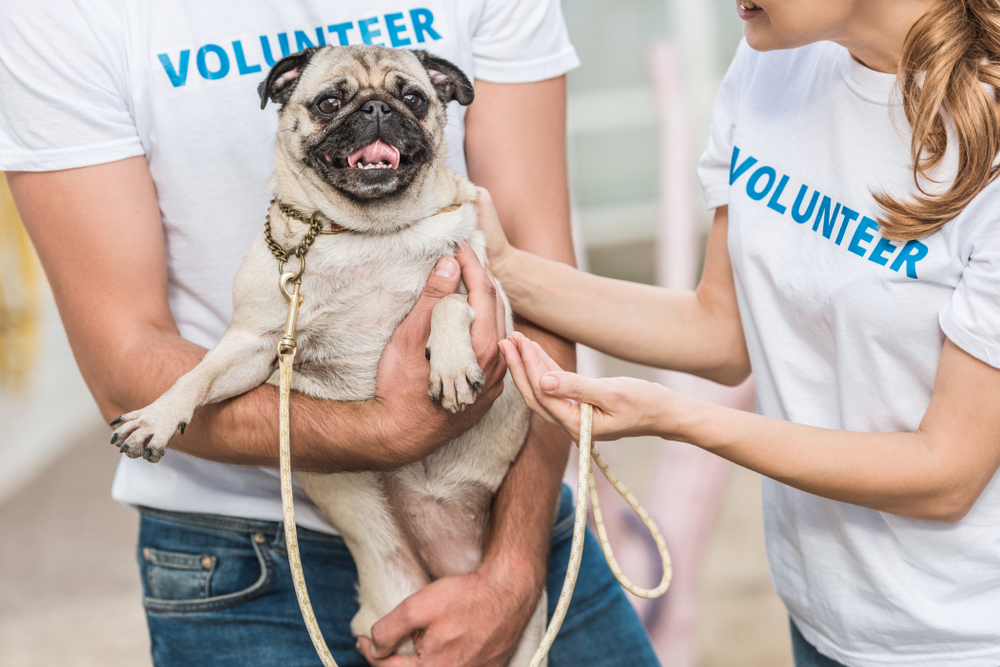
The beginning of a new year is a great time to set a goal of helping not only your own dog or cat, but also the many unwanted and abandoned pets in shelters. Consider fostering a pet—some dogs need to buy time in a foster home until they get forever homes. When shelters are full, pets who need help may be turned away, or worse, euthanized. If fostering a pet is not possible, consider donating time, money, or food to a shelter.
Happy holidays, and here’s to a wonderful 2020 with your furry friends.
Meet the Women Behind the Scrubs at Pearland Animal Cancer and Referral Center
The Pearland Animal Cancer and Referral Center team is second to none. With a passion and expertise for helping pets, each team member strives to give you and your pet her best. Our greatest honor is your trust in us to care for your beloved four-legged family members. Read on to learn more about the women who work so hard to make this practice great.
Melissa Parsons-Doherty, DVM, DACVIM (Oncology)
 Dr. Parsons-Doherty was born and raised in Canada, where she received her Doctor of Veterinary Medicine (DVM) at the Atlantic Veterinary College, Prince Edward Island. After graduating from veterinary school, she moved south to the United States to train as a veterinary oncologist, completing a rotating internship in medicine and surgery at Garden State Veterinary Specialists, New Jersey, and an oncology internship at the University of Georgia. She then spent a few years in Baton Rouge, Louisiana, where she completed her residency and became board-certified in medical oncology at Louisiana State University.
Dr. Parsons-Doherty was born and raised in Canada, where she received her Doctor of Veterinary Medicine (DVM) at the Atlantic Veterinary College, Prince Edward Island. After graduating from veterinary school, she moved south to the United States to train as a veterinary oncologist, completing a rotating internship in medicine and surgery at Garden State Veterinary Specialists, New Jersey, and an oncology internship at the University of Georgia. She then spent a few years in Baton Rouge, Louisiana, where she completed her residency and became board-certified in medical oncology at Louisiana State University.
After completing her training, Dr. Parsons-Doherty returned to Canada to work and teach at Ontario Veterinary College’s Animal Cancer Center. Her experiences there were formative—she was amazed by the relationships her clients formed when facing their pets’ cancer diagnoses together, and she decided she wanted a practice of her own that would be dedicated to the client experience. Her ultimate goal was to create a practice where she could spend valuable time with people and their pets through the cancer process, providing help and support whenever needed.
A warmer climate beckoned, so Dr. Parsons-Doherty packed up her family and moved to Houston, where she accomplished her vision—the first specialty Houston-area veterinary hospital dedicated to the care of dogs and cats with cancer.
Dr. Parsons-Doherty and her husband, Kevin, have been married for 22 wonderful years, and share their home with seven pets: two German shepherd dogs, Bryson and Cruiser, and five cats, who include Skippy and Little One, and three adorable kittens named Poppy, Holly, and Cherry.
Texas life suits Dr. Parsons-Doherty much better than the frigid north, and she says she will take being too hot over being too cold any day of the week! When the scrubs come off, you’ll find her listening to country music, taking in the newest romantic comedy, or noshing on seafood, her favorite food. She is still trying to master the ever-elusive work-life balance, but she enjoys getting crafty by decorating and sewing when she has “off” time.
When she daydreams, Dr. Parsons-Doherty sees herself far from Houston traffic, relaxing on a tropical island with the warm ocean breeze in her hair.
Irene Garcia, LVT
 Irene graduated from Vet Tech Institute of Houston and became a licensed veterinary technician in 2013. She wears two hats at the clinic—she’s in charge of our entire inventory, and she performs veterinary technician duties.
Irene graduated from Vet Tech Institute of Houston and became a licensed veterinary technician in 2013. She wears two hats at the clinic—she’s in charge of our entire inventory, and she performs veterinary technician duties.
Irene lives in Pearland with her husband, son, and a variety of four-legged family members. As a child, Irene was never allowed to have pets, so she’s making up for lost time in the pet department. Her morning roll call includes:
- Ellie the cat, whose nickname is Belly
- Cassius the Doberman pinscher, who is a very good boy
- Marcie the German shepherd, whose heart belongs to Cassius
- June the cat, who is lovingly called Juneba for her uncanny impression of a Roomba—she cleans up every crumb of dropped food
When she’s not taking care of her menagerie, you’ll find Irene sitting squarely on the fence, which makes her exceptionally easy to please. Her taste in music runs the gamut, she enjoys all movie genres except horror flicks, and she’ll try any kind of food. In fact, when her scrubs come off, you can often find Irene exploring the many excellent Houston-area restaurants.
Briana Radford, CVA
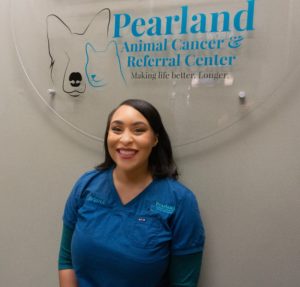 Briana, a certified veterinary assistant from Missouri City, Texas, has been in the veterinary medical profession for six years, but caring for animals has been in her blood since childhood, when she developed a passion for caring for stray animals. She is currently studying agriculture and animal science.
Briana, a certified veterinary assistant from Missouri City, Texas, has been in the veterinary medical profession for six years, but caring for animals has been in her blood since childhood, when she developed a passion for caring for stray animals. She is currently studying agriculture and animal science.
Unlike her coworker Irene, Briana can easily pick music, movie, and food favorites. On her breaks, she can be found listening to ’90’s R&B music, eating Chinese food, and enjoying a clip or two of her favorite sci-fi movies. And, you can always find her wearing something in her favorite color—pink—every day.
Briana and her cherished son share their house with Ali, the European Doberman, and Achilles, the retriever mix. Her five-year plan includes two huge goals—finishing her degree, and becoming a first-time homeowner. When the scrubs come off, Briana might be found practicing one of her secret talents—playing the clarinet, or offering her skills as a freelance makeup artist.
Amy Edgar, LVT
 Amy Edgar is a licensed veterinary technician, born and raised in Houston, who was afflicted by the veterinary medicine bug in high school, when she got her first job at a small animal clinic. Amy comes by her love of animals honestly—her parents, who live nearby, and her sister, who lives in Fort Worth, are all huge animal lovers, too.
Amy Edgar is a licensed veterinary technician, born and raised in Houston, who was afflicted by the veterinary medicine bug in high school, when she got her first job at a small animal clinic. Amy comes by her love of animals honestly—her parents, who live nearby, and her sister, who lives in Fort Worth, are all huge animal lovers, too.
When the scrubs come off, you can find Amy hanging out at her boyfriend’s cattle ranch in Hempstead, listening to country music. She claims four pets: Labrador retrievers, Ruger and Dude; a horse named Boon; and a pony, Rusty.
If she could travel anywhere in the world, Amy would go to the tropics—as long as there is a Starbucks—but when she’s home snuggled up with her four-legged family members, she’s likely watching sports or comedies and dining on her favorite cuisine, Mexican food.
Welcome to our clinic
Thank you for taking the time to learn a little more about our staff. We are honored to call you our clients and friends, and we look forward to seeing you in our clinic when your pet needs us.
Top 10 Experiences on Every Houston Dog’s Bucket List
Pet owners often tell us that they want the best quality of life for their pets, especially as the end nears. We understand that being able to treasure the remaining time with your beloved companion is incredibly important. As soon as your family veterinarian diagnoses your pet with cancer, you are naturally thinking about how to best enjoy the time left together. If your pup loves exploring new places and thinks a stranger is a friend she hasn’t yet met, check out these 10 places every Houston dog (and owner!) should experience to satisfy that zest for life.
#1: Barnaby’s
Named after the owner’s sheepdog pal when he was a kid, Barnaby’s is a Houston favorite for dogs and people. With several locations, this laid-back cafe boasts an impressive menu that caters to meat-lovers and vegetarians alike. Your pup will delight in the smells wafting from the sizzling grill, whether you order a ribeye or salmon to share, let your pup enjoy a bite of your hemp seed burger, or just want to snack on a few waffle fries.
#2: Astros Dog Day
Bring your Astros Rally Pup to the annual Dog Day celebration held at Minute Maid Park to enjoy a game of baseball and other activities geared toward dogs, and meet new canine friends. Check out the disc dog performance, prance around in the pooch parade, and dress up for the costume contest to try to win first prize.
#3: Discovery Green
Considered Houston’s “village green,” Discovery Green is a 12-acre oasis of urban green space where locals gather for fun, entertainment, learning, and building connections. Take advantage of the off-leash dog park, or bring your leashed pup to one of the more than 600 free events held throughout the year. While not all events are dog-friendly, your canine companion is often able to join you at concerts, movies, and festivals.

Discovery Green is a destination for Houston pups and their owners.
#4: The Lake House
Nestled inside Discovery Green and situated along the south shore of Kinder Lake, the Lake House is ideal for fueling up before hitting the trails with your hound. Known to have some of Houston’s best burgers, the Lake House also offers signature salads and other casual dining fare, along with a wide array of beer, wine, and other drinks. After sharing a bite or two of your meal with your dog, wander the trails to burn off those lunch-time calories.
#5: Congressman Bill Archer Dog Park
Located in the midst of the 926-acre Congressman Bill Archer Park, this dog park is incredible. With 17 acres blocked off solely for canine play, you won’t find a larger dog park in the area. Off-leash play is fun for dogs of all sizes in the 14-acre run, while smaller dogs can frolic in the 3-acre space. Packed with water features, leafy trees, benches, hiking trails, and a shower for post-play clean-up, you’ll have a tough time getting your pup in the car to go back home.
#6: Rummy’s Beach Club
Perfect for water hounds, Rummy’s Beach Club boasts a 15,000-gallon, custom-designed swimming pool where pups of all sizes can splash. In addition to offering a fun way to cool off, the club hosts a variety of activities, including dock jumping, canine water aerobics, and canine CPR and first-aid classes. If your dog would rather get her paws dirty, Dog Mountain is a great complement to the water sports. This huge dirt pile allows dogs to indulge in digging without fear of being scolded for tearing up the rose bushes. Enjoy this private aquatic play area year-round, as the pool is heated and covered in the winter.
#7: Houston Arboretum and Nature Center
Delight in nature’s wonders by hiking the five miles of trails winding through the Arboretum. Entrance is free, and you and your pup can experience prairie, forest, wetland, and savannah habitats on your own, or join one of the guided tours on Saturdays.
#8: Cottonwood
A relaxed hangout featuring a giant outdoor space, Cottonwood serves up excellent Texas pub fare and fine beer, with 42 beers on tap. Young children and four-legged kids are welcome to enjoy the occasional live music, deck games, and crawfish boils.
#9: Throughgood Coffee
If your morning won’t get started without a jolt of caffeine, snap a leash on your pup and head to Throughgood Coffee. Known for the best coffee and food sourced from local establishments, you can charge up for the day with the perfect cup of coffee while your dog burns off some morning energy in the mini dog park.
#10: Frascone Winery
About an hour outside of Houston, Frascone Winery is perfect for the pooch with a sophisticated palate. You can kick back and relax while sipping on an award-winning mead, created from honey that the winery produces, and enjoy the delights of a Vietnamese/Italian menu with your pup. If you and your canine companion plan on sampling more than the wine offerings, reservations are required for dining.
Including your pet in all the wonders life has to offer is one of the most enjoyable aspects of pet ownership, although it’s bittersweet when you’re checking off items on your pal’s bucket list. First, ensure your pup is up to exploring by checking in with your family veterinarian or contacting us about her appetite, pain, attitude, and mobility. Together, we can help you create wonderful memories with your best furry friend.
Acupuncture – It can help with cancer treatment and quality of life!
It’s difficult to be the parent of a fur baby with cancer and our first thoughts are often how can we help our pets feel better? Thankfully, there are a variety of treatment options for many different types of cancer including Lymphoma, Mast Cell Tumor, Soft Tissue Sarcomas, and other types of cancers.
As pet parents we are often concerned with how will our pet feel with these treatment options? Chemotherapy treatment can differ greatly for each pet and there can be side effects, but the goal of our treatment is to make life better, longer. Chemotherapy is generally well tolerated but side effects can include decreased appetite, nausea, vomiting, or diarrhea. These are the most commonly seen side effects for patients receiving chemotherapy and they are often mild and self-limiting. We are here to support our patients through their chemotherapy journey and to do this best we offer a combination of veterinary medicine and alternative therapies such as acupuncture.
Acupuncture is a widely recognized tool in both human and veterinary medicine and the list of uses for this therapy is constantly growing! This therapy has been shown to help relieve pain, improve mood, and alleviate stress and tension. Over the last several years acupuncture has begun to play an even bigger role in veterinary oncology. Acupuncture can be used to improve appetite, and minimize vomiting and diarrhea. Acupuncture used in combination with chemotherapy can help to achieve our goal of making life better longer. Our patients enjoy a good quality of life 80% of the time while receiving chemotherapy and this allows them to be at home with their families enjoying their favorite things!
Acupuncture is well tolerated and there a many different acupuncture points that can be used in all different parts of the body. In addition to alleviating the possible side effects of chemotherapy acupuncture can also improve their quality of life by helping to decrease pain, help them rest, and even help with anxiety. Additionally, through the stimulation of acupuncture points the body is stimulated to release serotonin and endorphins which help to make them feel better and happier. This therapy allows us to help improve the quality of life in so many ways and give them the best care possible.
Cancer Care for our Pets! Making life better. Longer.
Approximately 40% of pets over 9 years old will be diagnosed with cancer. Gone are the days where our family pets die of “old age”. More commonly today pet parents are noticing illness earlier in their pets and are pursuing referral to specialists in the area of need. As in human medicine, there are Oncologists to help treat cancer in our pets. More specifically, there are medical oncologists, surgical oncologists and radiation oncologists that all work together for the optimal care of dogs and cats with cancer.
Similarities between cancer diagnosis and treatment in humans and our veterinary patients, however, are varied. The tests available and the approach to obtaining a cancer diagnosis are very similar. Treatments may include some of the same drugs, but the goals for treatment and the doses used to accomplish these goals are very different. Staging tests are common in people and patients when cancer is suspected. These tests often include bloodwork, urinalysis, chest x rays, ultrasound, CT scan, MRI, and biopsy. The information provided using these tests help Oncologists determine the most appropriate treatment options for each individual patient and their disease. Often recommendations are made regarding a list of tests that would ideally be performed. Then based on the information each test provides and its cost, the owners and veterinarian can choose which tests to include in the plan. More information is always best, but this may not be possible based on cost of the test, or risk to the patient.
Treatment for cancer in dogs and cats often can be divided into three types: medical (includes chemotherapy or palliative care), surgery for mass removal, and radiation therapy. Unlike human cancer treatment, where an aggressive approach with all three modalities is often pursued at any cost, in hope of a cure or complete remission, in veterinary oncology our goal is to provide the best quality of life for as long as possible. Cure is rarely obtained and often would not be possible without significant side effects to the patient. Chemotherapy is often administered at lower doses and often one at a time. In this way, side effects are often self-limiting. Less than 5% of veterinary patients are hospitalized for chemotherapy related illness and more than 80% have a good quality of life for most of the time. Chemotherapy comes in many forms as well. Oral medication administered at home or in hospital, a quick intravenous bolus versus a long infusion, or subcutaneous treatment.
Surgery ideally is planned first. This involves performing a biopsy and often a CT scan. These tests provide information about the location of the mass as well as a diagnosis. Since not cancers require the same surgical approach. Depending on the CT and biopsy results, a small surgery or a larger, more extensive surgery, may be recommended depending on the goals – palliation versus cure. We have many advancements in pain control in veterinary patients and so post-operative pain management is very successful in maintaining the comfort of the patient.
In some cases where complete removal of the cancer is not possible with surgery, then removal of the mass may be followed by radiation therapy. Radiation can be viewed as a high dose x ray beam that is aimed at a target, the tumor, and administers a dose of radiation to a local area. The is performed under general anesthesia so the patient does not move. In cases where surgery is not possible, then radiation can help to stabilize the size of the mass or shrink it to improve the comfort of the patient. Side effects for radiation therapy in dogs and cats are less severe with fewer doses. They can occur as the number of treatments increases and typically heal a few weeks after the treatment is completed.
When faced with the possibility of cancer in our family pets, it is important to seek information so that the overall health of the pet can be assessed and treatment options can be provided. The earlier a problem or disease process is detected, then generally the better the outcome. Contact your veterinarian or local oncologist for any questions or concerns your may have.
Cancer Q &A:
What are some of the the signs of Cancer in our pets?
Early detection of cancer in our pets is an important factor in successful treatment. Some common signs may be vague such as loss of appetite, vomiting, weight loss, diarrhea, antisocial behavior, lethargy, increased thirst and urination, or urinary incontinence. More specific signs may include the appearance or changes in swellings or masses, non-healing skin lesions, limping or lameness, nose bleeds, or other bleeding, or difficulty eating.
How might we be able lower the risk of cancer or possibly prevent it in our pets?
There is no certain way to prevent cancer, however, some actions may lower the risk. These may include:
- Avoid repeated exposure environmental tobacco smoke, pesticides and herbicides
- Avoid direct sunlight
- Spay female dogs and cats before first heat
- Minimize inflammation from trauma, vaccination
- Increase physical activity, feed vegetables
- Regularly check for lumps and bumps.
Fight Cancer! Screen your pet for all Lumps and Bumps
Approximately 40% of pets over 9 years old will be diagnosed with cancer but we can improve outcomes in our pets with early detection. This is best accomplished by routine veterinary evaluations and regular assessments by owners at home. This is important for both dogs and cats. Dogs commonly form ‘lumps and bumps” that are benign, non-cancerous masses but these must be tested to differentiate between non-cancerous, and cancerous (benign or malignant) lesions. The most common lumps found on dogs are “fatty tumors” known as lipomas. These do not have malignant potential but can grow to interfere with the dogs ability to move or rest comfortably. Others include benign skin cysts and dermal melanoma. Common malignant skin nodules or masses include mast cell tumors and soft tissue sarcomas. These have the potential to grow quickly and become locally invasive, making removal difficult. They can also metastasize. A definitive diagnosis of these is best obtained using a biopsy which is removal of a piece of the tissue or the entire lesion. The extent of the removal (a piece of vs. the entire tumor) is based on the ease of removal, size and location of the lesion. Additional testing to determine if there is any evidence of metastasis is called staging and may include thoracic radiographs, abdominal ultrasound, fine needle aspiration of local lymph nodes and other lumps (patients can have more than one!) and blood and urine testing. Importantly, lymphoma often also can appear as “lumps”, but may be enlarged lymph nodes under the jaw and not a mass in the skin as with the others.
Cats on the other hand, do not commonly form benign, non-cancerous lumps and bumps, and for this reason, all new lesions should be sampled as soon as they are noticed. One lump that may be non-cancerous is a post vaccine reaction. This may be a swelling that forms days to weeks post vaccination. Sometimes it may be difficult to differentiate this from an injection site sarcoma which is a malignant and very difficult cancer to treat if not detected early when it is small. Cats also can form mast cell tumors which tend to be less aggressive than those in dogs but are still considered malignant. Lymph node swelling due to lymphoma can also occur as in dogs. Female cats that are spayed later in life also have an increased risk of mammary cancer so lumps on the abdomen should be assessed for mammary cancer.
Watch it means “watch it grow”. It is always important to monitor and test all lumps and record on a body map. Ask your veterinarian to test all growths and for a body map diagram to keep track of all your pets lumps and bumps.
